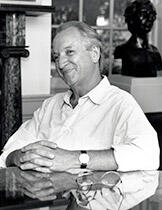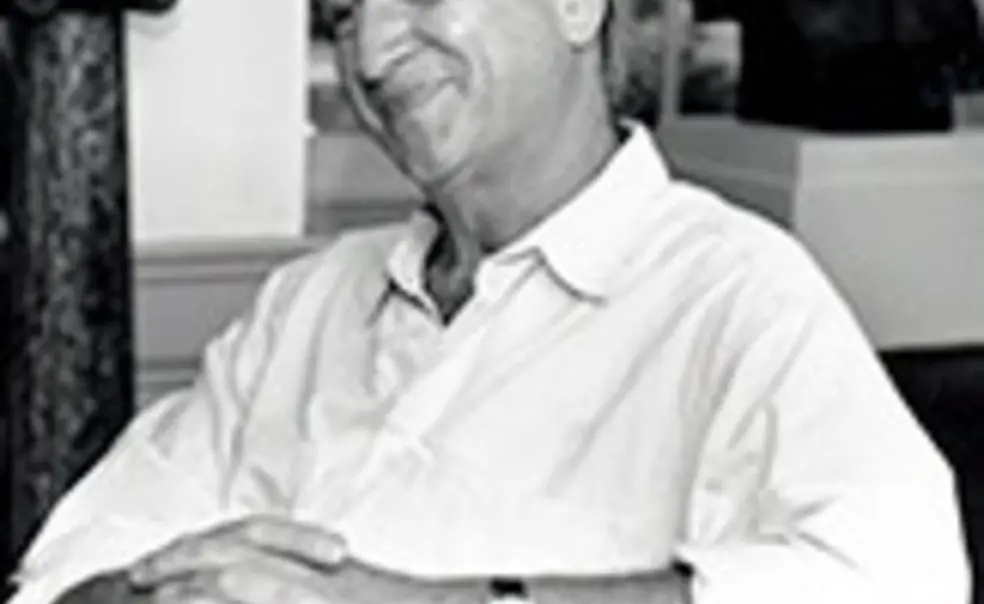Essay: John R. DaSilva '85
Recollections for a Celebration of the Career of Professor Michael Graves, May 26, 2010

Princeton from 1981 to 1985 was the place to be as an architecture student. Philip Johnson told me so. When I was a high school student in Danbury, Conn., up the road from New Canaan and the Glass House, I knew I wanted to be an architect and I applied to colleges with that intent. When decision time came I needed help and Johnson was the most prominent architect in the state. I got a hold of a New Canaan phone book and, low-and-behold, he was listed. An assistant at the Glass House told me Mr. Johnson was not at home but if I called back at a specific time and date I could talk to him. When I made that call Johnson was indeed eager to help me — and to test me too. I gave him the list of schools where I had been accepted. With a sly tone of feigned ignorance, he said “who is that young fellow at Princeton that is changing architecture right now?” I replied “Michael Graves.” I passed Johnson’s test and he told me to go to Princeton. It was one of the best recommendations ever made to me.
I expected to find Professor Graves, or Michael as he wanted everyone to call him, to be a celebrity in an ivory tower, but in fact he was just one of several great professors who were accessible, generous with their time and committed to all, including undergraduates. Some might think the star of the profession of the early ’80’s would get special treatment. Not so for Michael. For example, he was fond of bringing his dog with him to late night critiques in the studios. The friendly but not particularly disciplined creature would roam the school and enjoy lots of student attention, but one night it had trouble getting noticed. The next morning the malodorous result was prominent on the carpet of a much-in-demand class room and the janitorial staff was not amused. Michael paid for the clean up and agreed to a ban on pets in the building.
Michael could not have had a more significant impact on my education. His direct teaching and indirect influence contributed to a design culture at Princeton of both rigorous historical study and personal creative invention. The call for a celebration of Michael’s teaching career upon his winning the 2010 Topaz Medallion lead me to dig out my notes from Architecture 402: Thematic Studies in Architecture, Michael’s lecture course. Re-reading them after more than 25 years was a revelation. Right from the start the lectures stress the view of architecture as communication — as an ever-expanding language where rules exist but are fluid and meant to be challenged. In the introduction to the first lecture Michael stated, “architecture can become a formal description of ritual life — it tells a story.” As the lectures went on it became clear that the story to be told was a lofty one. Michael insisted that architecture is a language to be used to represent the highest aspirations of society, and using this language to invent is the highest form of creativity. Language, Michael taught, allows the exercise of imagination rather than restricts it. It is broad and flexible enough to encompass both the universal and the personal. While it has rules, and he insisted we learn them, he also insisted we learn to break them and that one of these skills is not relevant without the other.
Character in architecture was stressed right from the beginning as well: “architects should be able to create character in buildings as vividly as great writers create characters in literature.” Character can lead to architecture that is at once playful, evocative and serious. In Graves’s world, dry, academic and abstract classicism gave way to rich, inventive, humanistic classicism. Character ruled over style. Character could allow architecture to embrace associations with popular culture, art, literature, context and both high and vernacular historical architecture. Language and character come together to allow architects to develop personal expression derived from a common language — to design buildings that are at once new and familiar — unique and recognizable.
The long list of architects he discussed in these lectures include those that remain to this day my most beloved — Michelangelo, Palladio, Hawksmoor, Borromini, Jefferson, Soane, Shaw, Lutyens, Wright and Aalto are just a few. Michael’s deep knowledge and well reasoned criticism of Le Corbusier called out from the notes. Paintings as well as buildings were significant in illustrating the lectures and the broad range he used included works by Botticelli, Titian, Raphael, Tiepolo, Poussin, Mondrian, Picasso, Matisse, De Chirico, Duchamp, Hopper and Hockney. Concepts were described in rich language using words and phrases like symbol, metaphor, meaning, representation, re-centering, forced perspective, aedicule, fragment, echelon, hierarchy, anthropomorphic, figure, mock-mountain, transparency, dynamic, ambiguous, distortion and tension. How I wish these names and concepts were in the minds, and rolled off the tongues, of the young architecture graduates I meet today! The vocabulary Michael used in these lectures and the ideas he formulated are second nature to me now, but I fear they are not to a younger generation.
The lectures were history and theory lessons but they were also lessons in the practical application of history and theory. Michael illustrated his ideas with images of his own work as well as those of historical architects. To a greater extent than any other teacher I can recall, Michael let his students in on his own design methods. He shared his constant experimentation and invention. Ultimately his own character and personality were revealed through his work, his lectures and his criticism too. In the design studio and on reviews the lectures were brought to life. He stressed the importance of drawing as well as talking — of perfecting both visual and oral skills. Use of color, pattern, texture and scale, plus a generous helping of wit and whimsy, were added to the concepts from the lectures. Like in his own design work, his criticism combined the rigors of classicism with an insistence that each student develop their own personal approach.
A few years ago I sent Michael a draft of a monograph on the work of my own firm on Cape Cod. I found that Michael was still generous with his time. He reviewed it and wrote a beautiful endorsement for the book in which he suggested that I have indeed developed my own personal approach — and he liked it! As a student from the era it is thrilling to know that the lessons Michael taught in the early 1980’s are still on his mind, and that despite the popularity today of very different ideas, he still promotes the importance of language and personal expression in architecture. With today’s profession moving in many diverse directions — literal classicism, neo-modern, technological expressionism, avant-garde, and more — there seems to be little public attention given to Michael’s approach despite his still prolific built work. I think the best testament that I, or any former student, can give to the career of this great teacher is to state that I still believe the lessons he taught are relevant and appropriate, and every day they continue to bear on the work that I do.
John R. DaSilva, AIA is Design Principal of Polhemus Savery DaSilva Architects Builders, based on Cape Cod. He received his AB in Architecture, Summa Cum Laude, from Princeton in 1985 and his Master of Architecture from Yale in 1989. Architecture of the Cape Cod Summer: The Work of Polhemus Savery DaSilva was published by Images in 2008.
READ MORE: Michael Graves: A Memory, by Cynthia Phifer Kracauer ’75 *79












No responses yet